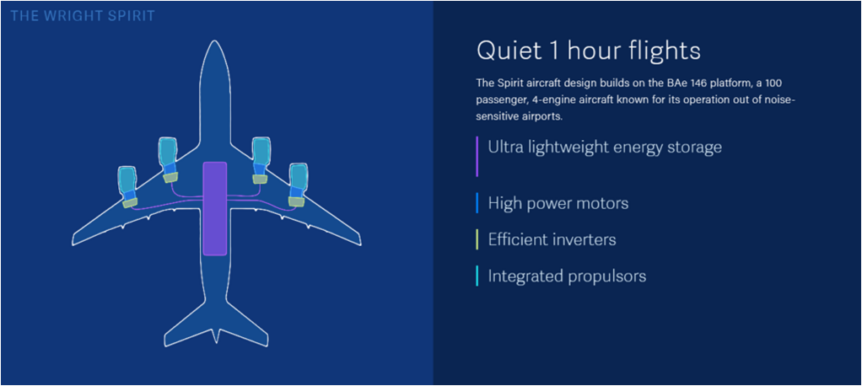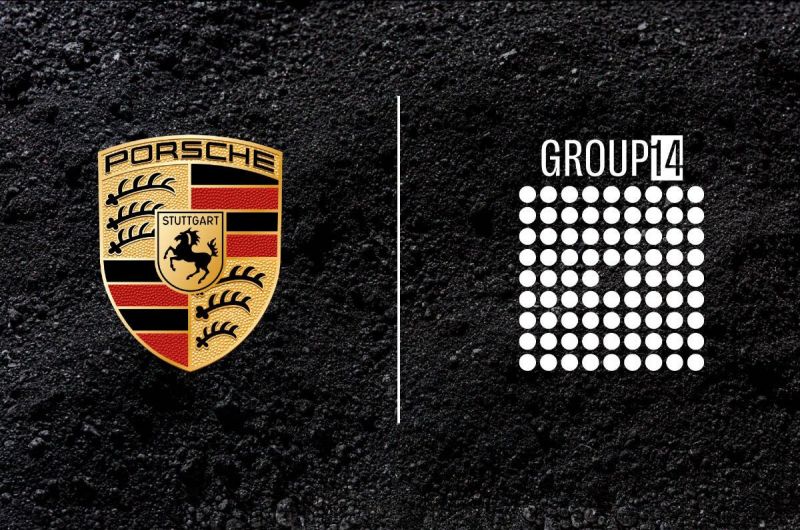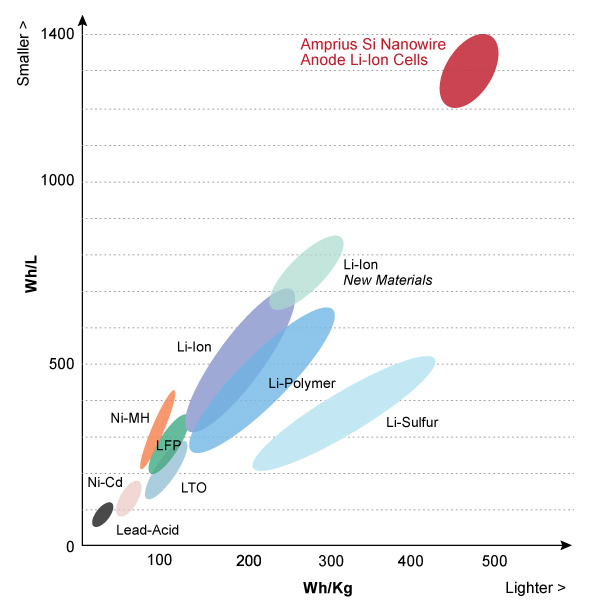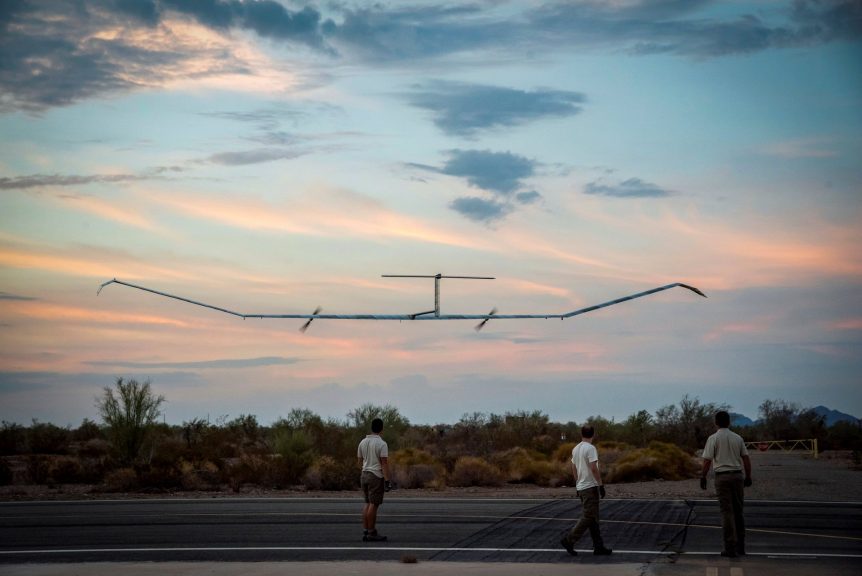A one kilowatt per kilogram battery would be a literally fulfilled wish in any aircraft designer’s list of desirable advances. Tesla’s drive around with 260 Watts per kilogram in their floors, and Amprius recently announced 500 Watt per kilogram cells. A battery able to store one kilowatt of energy in one kilogram (2.2 pounds) would be an enormous breakthrough for electric aviation. Under “stealth” development before being announced in 2023, the battery could become a fitting companion to the lightweight motors and controllers Wright is crafting. ARPA-E (the Advanced Research Projects Agency–Energy) rewards some very creative teams. One winning team combines Wright Electric and Columbia University in an effort to develop tomorrow’s 4X batteries. Three Project Parts ARPA-E awarded $1,499,098 to “support development of an ultra-energy-dense aluminum battery and novel artificial intelligence system.” Part of the Plane Electrification with 1K energy storage systems program (PROPEL-1K), the award will fund what Wright promotes as “Air-1, [an] elevated temperature battery designed for …
Amprius Batteries Fly High and Down Under
Flying high and down under, Amprius, the San Francisco Bay area-based battery developer and maker, announced 450-Watt-hour per kilogram cells, and seemingly immediately secured orders from three major clients. One client of the three is a British specialist in HAPS (High Altitude Pseudo Satellite) aircraft. A probably unrelated sale went to an Australian light plane maker unveiling the country’s “first commercially produced electric aircraft,” a two-seat trainer. BAE/Prismatic BAE Systems has collaborated with Prismatic, a HAPS pioneer, in the development of solar-powered unmanned aerial vehicles (UAVs). The partners have crafted two prototypes of the PHASA-35 unpiloted aerial vehicle, a 35 meter (114.8 feet) span airplane weighing 150 kilograms (330 pounds) capable of carrying a 15 kilogram (33 pound) payload. Solar cells power the craft’s electric motors during the day and charge the Amprius batteries that keep it in the air at night. Amprius claims, “The new 450 Wh/kg cells are the only known commercially available batteries of their kind that …
Group 14 Gets a Push from Porsche
We covered Washington Governor Jay Inslee’s visit to the Group 14 Technologies battery plant in Woodinville last year. Now the Group is getting attention from Porsche, among other funders. The startup company announced raising $400 million from investors including the Teutonic automaker. According to Reuters, part of those funds will be used to build a second battery materials plant in eastern Washington State. The company is now valued at over $1 billion, money which will help expand battery materials production for the silicon-lithium cell market. Silicon is a desirable material in batteries, capable of storing more energy than lithium or other metals. It has a major drawback, though. In expanding and contracting during charge-discharge cycles, it eventually deteriorates, crumbles, and brings the battery’s usefulness to an end. Dr. Yi Cui of Stanford University has tried various methods over the years to prevent such crumbling. His firm, Amprius, has developed a silicon nanowire anode that enables a battery with 450 Watt-hour …
Amprius, Airbus, Silicon and Batteries
Batteries are a tough study. We see many different roads being traveled in attempts to reach the Nirvana of the lightest, most powerful energy storage cell ever. We see continuing shortfalls because of the much chemistries that seem never to work out as hoped. Several recent articles, though, showed links that forced your editor into a deep study of battery developments first heard about a decade ago. These involved Yi Cui, Stanford professor and battery guru, silicon electrodes, and a new electrolyte that holds thing together. Presaging recent developments, your editor first heard Yi Cui present at the 2009 CAFE Foundation Electric Aircraft Symposium. Then, he predicted, based on the theoretical limits for silicon-based electrodes in batteries, that we would see 10X (greater energy density than then available) batteries in the not-too-distant future. A decade later, his company Amprius may be edging toward that goal with new funding from Airbus. Since then, Cui, his students and associates have helped boost …
Amprius’ Silicon Nanowire Batteries Fly – For 25 Days
Sunnyvale, California-based Amprius kept a low profile for several years, despite its founder, Yi Cui, being a leading light in battery development. Their December 4th press release, though, finds the company to be in a more open mood, their advanced lithium-ion cells with 100-percent silicon anodes having flown Airbus’ Zephyr High Altitude Pseudo Satellite (HAPS) for over 25 days, “setting a new endurance and altitude record for stratospheric flight.” This milestone represents a great leap forward since Alan Cocconi flew his So Long solar-powered model for 48 hours, the first of many projects of which he would be an integral part, and the first solar airplane to fly overnight. He worked on the General Motors EV1 and Eric Raymond’s Sunseeker 1 – just a small part of the automobiles and aircraft which he would help create or refine. Your editor first saw Cui at an early electric aircraft symposium nine years ago. Cui discussed the benefits of developing silicon anodes …
Dr. Yi Cui’s Latest, a Solid-state Electrolyte
Green Car Congress reports that, “Stanford researchers led by Professor Yi Cui have used ceramic nanowire fillers to enhance the ionic conductivity of polymer-based solid electrolyte by three orders of magnitude. The ceramic-nanowire filled composite polymer electrolyte also shows an enlarged electrochemical stability window.” With solid-state batteries coming to the fore through efforts by Ann Marie Sastry at Sakti 3 and Qichao Hu at Solid Energy Systems, an improved solid electrolyte would seem to offer greater battery safety and stability “when compared with conventional liquid electrolytes. The abstract for the Stanford researchers’ paper in the journal ACS Nano Letters explains that “Currently, the low mobility of lithium ions in solid electrolytes limits their practical application. The ongoing research over the past few decades on dispersing of ceramic nanoparticles into polymer matrix has been proved effective to enhance ionic conductivity although it is challenging to form the efficiency networks of ionic conduction with nanoparticles. In this work, we first report that ceramic nanowire …
A Milestone on the Road to Dr. Cui’s 10X Battery
Seeing the Amprius web site, one would never know that some “dramatic improvements” promised in the terse announcement might mean so much in terms of true breakthroughs. Neatly centered, Amprius’ total web site is a few lines of discrete text. Amprius is a leading Lithium-Ion battery developer Amprius’s silicon technology was originally developed at Stanford University and enables dramatic improvements in the energy density and specific energy of Lithium-Ion batteries. Amprius is backed by some of the world’s leading investors, including Trident Capital, VantagePoint Venture Partners, IPV Capital, Kleiner Perkins Caufield & Byers, and Dr. Eric Schmidt. Amprius, Inc., 225 Humboldt Ct. Sunnyvale, CA 94089 But the battery manufacturer has two first-generation product offerings with volumetric energy densities of 580 Watt-hours and 600 Watt-hours per liter. Most lithium batteries fall into a range from 250-500 Wh/l., putting the new cells at the upper limit of such batteries. Both Amprius batteries are now in production and available to original equipment manufacturers, …





